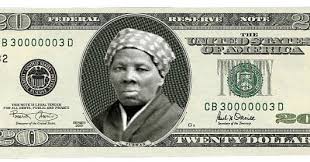Last year, the US treasury announced plans to replace Alexander Hamilton, the nation's first secretary of the treasury, on the $10 bill with a woman.
But they have now decided to keep Hamilton after both Hamilton supporters and women's groups championed for the $20 bill to be changed to incorporate a woman instead.
Harriet Tubman was a legend in her own time, escaping from slavery and returning to rescue dozens of other slaves as a “conductor” of the Underground Railroad. To help preserve the memory of this fearless crusader, here are 10 crucial facts about her life and work.

But they have now decided to keep Hamilton after both Hamilton supporters and women's groups championed for the $20 bill to be changed to incorporate a woman instead.
Harriet Tubman was a legend in her own time, escaping from slavery and returning to rescue dozens of other slaves as a “conductor” of the Underground Railroad. To help preserve the memory of this fearless crusader, here are 10 crucial facts about her life and work.

- Tubman was born into slavery in 1918 and endured a horrific life as young girl. She was often sent away from her family, hired out to other households.
- Harriet Tubman was a disabled person. She had Narcolepsy or sleeping spells. She could fall asleep any time and any place. This was caused by a severe blow to the head by a 2-pound iron weight thrown at another enslaved African, but it hit Harriet in the head when she was about 12 years old.
- Harriet Tubman never had any children
- Harriet Tubman freed herself in 1851 using the system known as the Underground Railroad. The Underground Railroad was a network of secret routes and safe houses used by enslaved Africans to escape to free states and Canada .
- After freeing herself from enslavement, Harriet Tubman returned to Maryland to rescue members of her family and others.
- In all, Harriet is believed to have conducted approximately 300 people to freedom in the North Canadian territory over a 15 year period.
- Harriet's husband John Tubman dies during the Civil War. Harriet later marries Nelson Davis.
- Harriet Tubman had once been a soldier, spy and a nurse.
- She was the first woman to lead an armed expedition in the war. She guided the Combahee River Raid, consisting of 300 free African soldiers on 3 gun boats to liberate more than 700 enslaved Africans in South Carolina.
- Tubman was often poor, even penniless. she was denied payment for her wartime service.
- In 1903, Tubman donated a piece of her land to the AME Zion Church, to be used to build a home for “aged and indigent colored people.”
- She died on 10 March 1913 after suffering from pneumonia.

